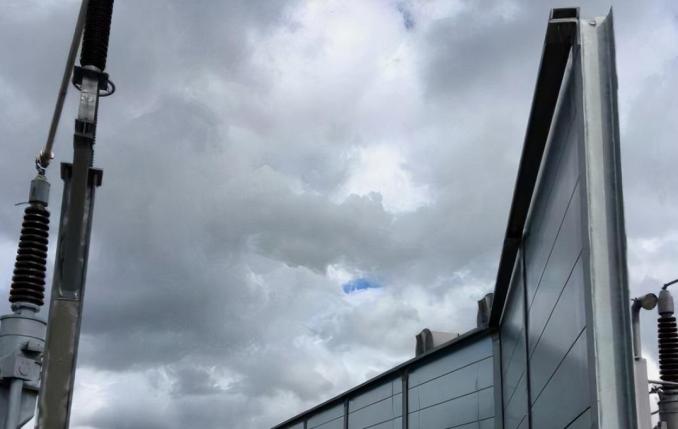Strathaven (UK)
Merford UK targets low frequency hum from power transformers.
Initial daytime site visit and subsequent night-time site visits, by an acoustic consultancy found that noise emanating from a Super Grid Transformer was primarily dominant at 100 Hz, with significant harmonic content at 200 and 300 Hz being also present.
These low frequency harmonic tones were also evident at the survey locations and it was recommended that any installed barrier be designed in a manner to reduce the contribution of noise not only at 100 Hz but also at the lower harmonics.
The team at Sonobex specialise in low frequency noise issues and have developed some specially tailored noise control solutions for them.
Sonobex proposed using our award winning, acoustic metamaterial-based NoiseTrap® LF 150 acoustic panels, with enhanced low frequency performance, to solve the problem.
A major complicating factor with low frequency noise is that it can travel long distances with relatively little attenuation compared to higher frequency components noise. Typically, noise levels fall over distance due to geometric spreading and absorption by the ground or air.
This means that as sound travels, its relative frequency content alters making the low frequencies more prominent at greater distances, creating low frequency noise problems. As a result of this it is not uncommon for complaints to be received from residences located far away from a problem source and over quite a wide area.
The noise mitigation works at the Electricity Substation where undertaken by Sonobex, in conjunction with Merford, where we designed, manufactured and installed a NoiseTrap® LF 150 acoustic barrier system to the south of the Super Grid Transformers to reduce the impact of low frequency noise levels on local residents
These unique metamaterial based acoustic panels were developed with a focus on power transformer noise abatement, but can also be applicable to other low frequency noise control applications. They can be used to construct either noise barriers or full free-standing enclosures depending on requirements. They consist of coupled resonator elements designed to ‘trap’ the sound, resulting in both high levels of absorption and transmission loss.
